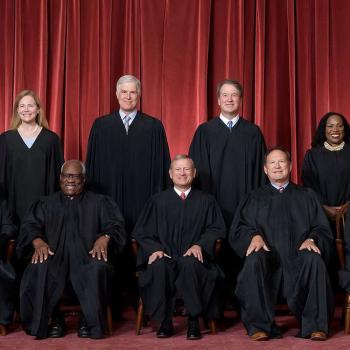To get to this point, we learned three crucial lessons from LGBT activists: We had to build a movement. We couldn’t be afraid to challenge our friends in power. And we had to give our cause a human face.
LGBT advocates showed us that the way to build power is by leveraging your competitive advantage. If money and votes are the currency of politics, their strength was in the former. Snarkily referred to by donors and beneficiaries alike as the “Gay ATM,” LGBT contributors gave generously to political candidates and won themselves a seat at the table.
Our strength lies in the other form of political currency: voters. After the devastating defeat of the McCain-Kennedy immigration reform bill in 2007, we made it our top priority to mobilize new Latino voters, who see immigration reform as a defining issue. . . .
We learned something else from the LGBT community. Early in Obama’s first term, when most progressives were swooning about the new president and the new era his election had ushered in, LGBT activists had a different take. Dismissing the Washington-insider notion that access means influence, they made it clear that they were not going to go along to get along. Led by bloggers such as John Aravosis, Joe Sudbay and Pam Spaulding, the LGBT community developed an outside strategy that openly challenged the White House.
Their first battle was over the president’s defense of DOMA. They were confrontational and fearless. LGBT advocates then upped the pressure on the White House and Congress to move on the repeal of “don’t ask, don’t tell.” Unwilling to accept the line that “we’d like to help you, but those Republicans just won’t let us,” gay activists mobilized donors, got arrested at the White House, demanded action and ultimately succeeded in repealing the military policy.
On immigration, most of Obama’s first term offered encouraging reform rhetoric, but not a lot of progress on policy. While the speeches were inspiring and the early meetings friendly, advocates like me had to face facts: We weren’t getting anywhere. In fact, the Department of Homeland Security was ramping up deportations to record levels. We strongly suspected that then-White House Chief of Staff Rahm Emanuel, who had famously called immigration a third-rail issue for Democrats in 2007, was saying much the same to the president.
And so, again, we applied a lesson from the LGBT activists. We even came up with a new rallying cry: “It’s time to go all LGBT on their a–.” I used it around the office and in meetings with colleagues. I meant, quite simply, that it was time to be confrontational. . . .
The final lesson our movement learned from the LGBT community may have been the most important. Gays and lesbians have created a monumental shift in American culture. They did it, first and foremost, by coming out to family and friends. They did it by infusing popular culture with popular characters, from Ellen to Will to Mitch and Cam. They did it by being brave and loud, out and proud.
We had nothing of the sort. To most Americans, undocumented immigrants were unknown and invisible. To some, they represented a menace. But then, just a few years ago, Dreamers — who take their name from the Dream Act, which would create a path to citizenship for young people who go to college or serve in the military — started to come out as “undocumented and unafraid.” They risked arrest, detention and deportation to fight for their freedom, their futures and their families. They became the heart of the movement, and their courage opened millions of minds. In 2010, four brave Dreamers walked 1,500 miles from Miami to Washington. In 2011, Pulitzer Prize-winning journalist Jose Antonio Vargascame out as an undocumented immigrant in the New York Times Magazine.
Suddenly, the human faces and personal stories so sorely missing in our debate broke through as never before.
Christians have mustered votes, but they (we) haven’t pressured the politicians they elected to follow through for them, as the gay and immigration activists have done. And Christians have not managed to project a human face. That, perhaps, takes suffering, which can lead to compassion. They may happen later.












